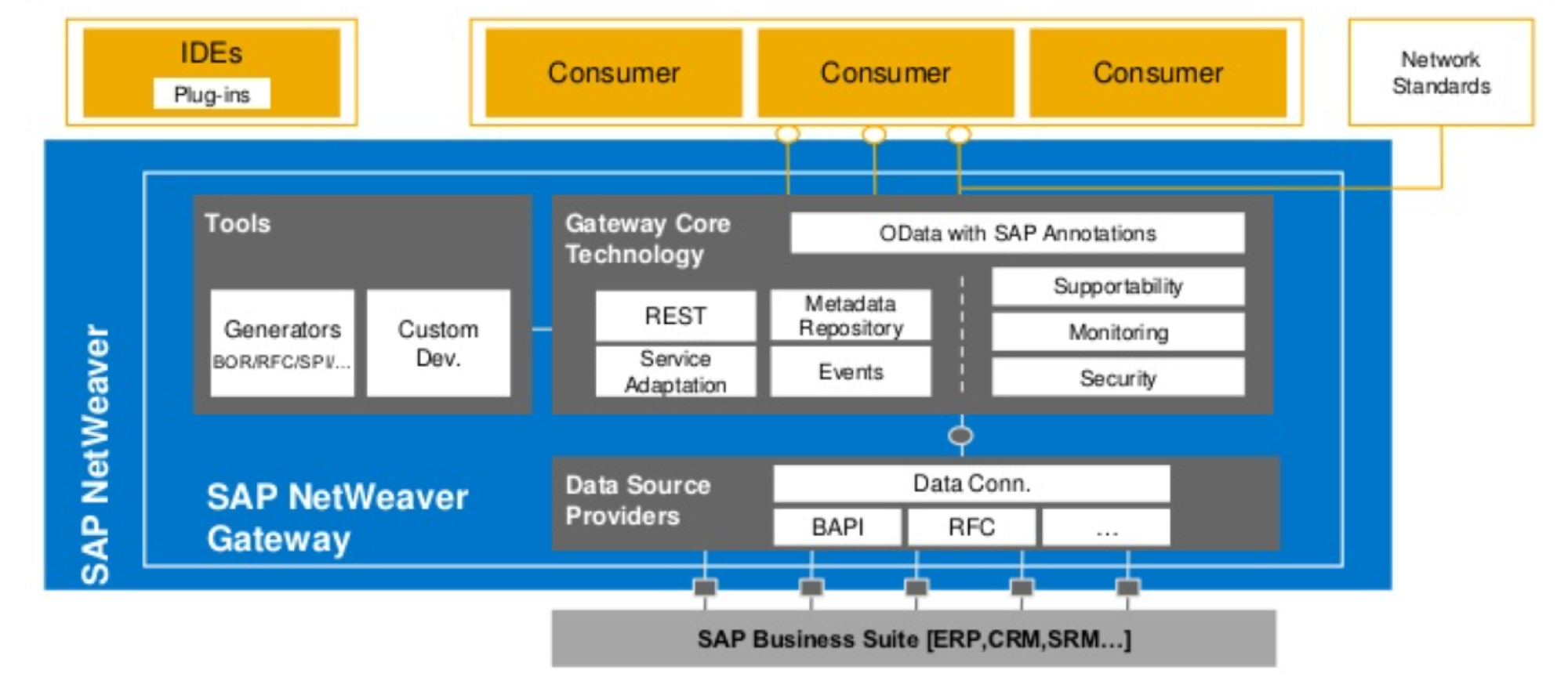Gregor Wolf
OData Services
with SAP
REST
Stands for Representational State Transfer
- Client-Server
- Statless
- Caching
- Multi-Level systemes
- Uniform interface
Uniform interface
- Resource identification in requests
- Resource manipulation through representations
- Self-descriptive messages
- Hypermedia as the engine of application state (HATEOAS)
OData - Open Data Protocol
OData
- V4 ia a OASIS Standard since March 2014
- Based on Standards like REST, RSS, Atom, XML and JSON
- Provides a uniform interface to data sources (Query + CRUD + Actions)
- Allows application integration using Internet technologies
- Available for SAP since May 2011 as SAP NetWeaver Gateway (today SAP Gateway)
SAP Gateway
- SAP Gateway is part of SAP NetWeaver ABAP since 7.40
- Allows to connect from Browser, Devices and Plattforms to SAP Systemen
- Implements OData v2 and starting with 7.50 also v4)
- Can run as a Hub system or embedded i.e. with SAP ERP as an Add-on
SAP Gateway - service implementation
- ABAP OO
- Core Data Services (CDS, minimum 7.50, AnyDB)
SAP Gateway - Architecture

Steps to an OData Service with SAP Gateway
-
Activate SAP Gateway in STC01
(Tasklist SAP_GATEWAY_BASIC_CONFIG) -
Define interface in SEGW
(Entities, Entity Sets, Function Import) - Implement Model- and Data-Provider classes
- Activate Services in /IWFND/MAINT_SERVICE
Comparison with other SAP Technologies
-
iDoc
mass data, asynchronous processing -
RFC
SAP to SAP connections (also used in SAP Gateway) -
OData
Easy to understand HTTP(S) API, synchronous processing
Benefits of OData (1 of 2)
- SAP is basing S/4HANA on it
- Humans can understand the interface
- Tight integration to SAPUI5
Benefits of OData (2 of 2)
- Push and Pull (Queue) for Backend changes
- Access SAP Data from non SAP programming languages
- Various uses of the data provided
Drawbacks of OData
- Backend must be reachable
- Only synchronous processing

